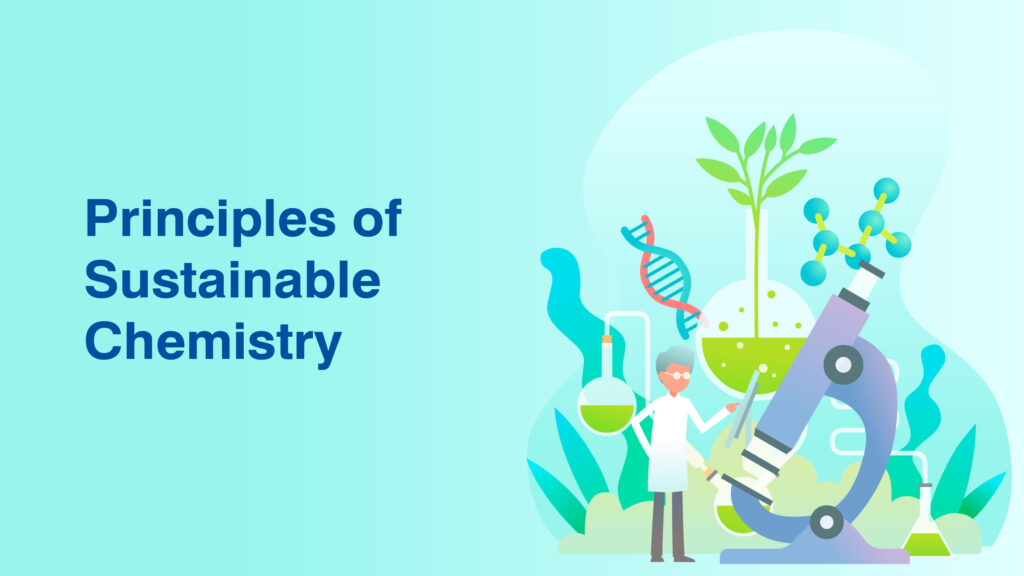Sustainable chemistry, also known as green chemistry, is rapidly gaining traction as a discipline dedicated to crafting chemical processes and products that have minimal environmental and human health impacts. In an era where environmental concerns are mounting, the significance of sustainable chemistry resonates across diverse sectors. This comprehensive overview sheds light on the fundamental principles, practical applications, and potential global ramifications of sustainable chemistry for industries and sustainability initiatives worldwide.
Understanding Sustainable Chemistry:
At its essence, sustainable chemistry represents a transformative shift within the chemical realm, emphasizing the reduction of ecological footprints associated with chemical procedures and products throughout their life cycles. This holistic approach revolves around innovating, advancing, and deploying chemical substances and methodologies that prioritize ecological integrity, economic viability, and social responsibility.
While sustainable chemistry and green chemistry are often used interchangeably, they embody closely interlinked concepts. While green chemistry focuses on mitigating or eliminating hazardous substances, sustainable chemistry takes a broader perspective, considering the overall sustainability of chemical products and processes. Its core principles encompass:
- Resource Optimization: Efficiently managing resources such as energy to enable natural replenishment.
- Hazardous Material Reduction: Minimizing the usage of hazardous materials and advocating for safer alternatives.
- Waste Minimization: Implementing efficient chemical processes with minimal waste generation.
- Life Cycle Assessment: Conducting a comprehensive evaluation of the entire life cycle of chemical products from extraction to disposal.
- Collaboration and Information Exchange: Encouraging collaboration among stakeholders to advance sustainable chemical practices.
Principles Underpinning Sustainable Chemistry:
Key principles guiding sustainable chemistry include:
- Atom Economy: Maximizing the incorporation of reactant atoms into final products to minimize waste generation.
- Renewable Feedstocks: Embracing renewable resources like biomass to reduce reliance on non-renewable feedstocks.
- Energy Efficiency: Developing methods to minimize energy consumption, thereby mitigating greenhouse gas emissions.
- Safer Chemicals: Prioritizing the use of chemicals posing minimal risks to human health and the environment.
- Catalysis: Promoting more efficient reactions through catalysts, reducing the need for harsh reaction conditions.
Applications of Sustainable Chemistry:
Sustainable chemistry finds diverse applications across various domains, including:
- Green Synthesis in Pharmaceuticals: Developing environmentally friendly synthesis routes for pharmaceuticals.
- Sustainable Agriculture: Enhancing agricultural practices to minimize environmental impact and ensure food security.
- Green Energy Technologies: Advancing eco-friendly energy production and storage solutions.
- Waste Minimization in Manufacturing: Optimizing manufacturing processes to reduce waste generation.
- Circular Economy Initiatives: Promoting resource reuse and recycling to transition towards a circular economy.
Impacts of Sustainable Chemistry:
Adoption of sustainable chemistry practices leads to significant global impacts, including:
- Environmental Benefits: Reduction of pollution, carbon emissions, and preservation of biodiversity.
- Economic Implications: Long-term cost savings through resource efficiency and improved public perception.
- Education and Collaboration: Fostering knowledge exchange and collaboration to accelerate sustainable practices.
Future Outlook:
The future of sustainable chemistry relies on technological innovations such as artificial intelligence, biocatalysis, and materials science. Collaboration among stakeholders and supportive policy frameworks will be pivotal in driving widespread adoption.
In Summary:
Sustainable chemistry offers a pathway towards a more environmentally conscious and resilient world. Rooted in principles of resource optimization, waste minimization, and collaboration, it holds promise in revolutionizing industries and guiding humanity towards a sustainable future. As innovation continues to drive progress, global collaboration and supportive policies will be essential in realizing this vision for generations to come.





Comments